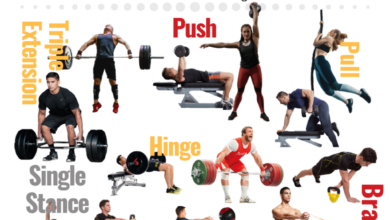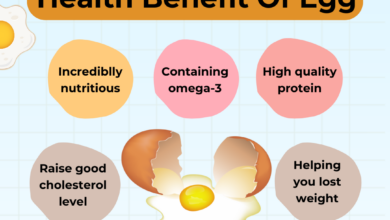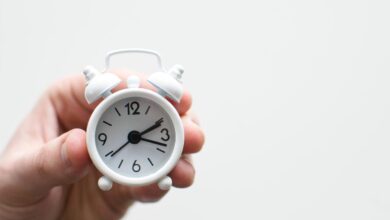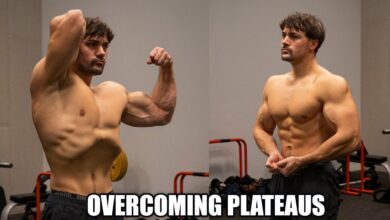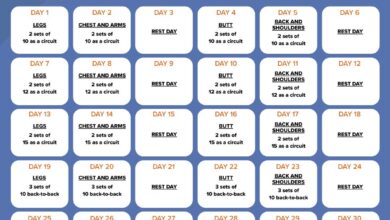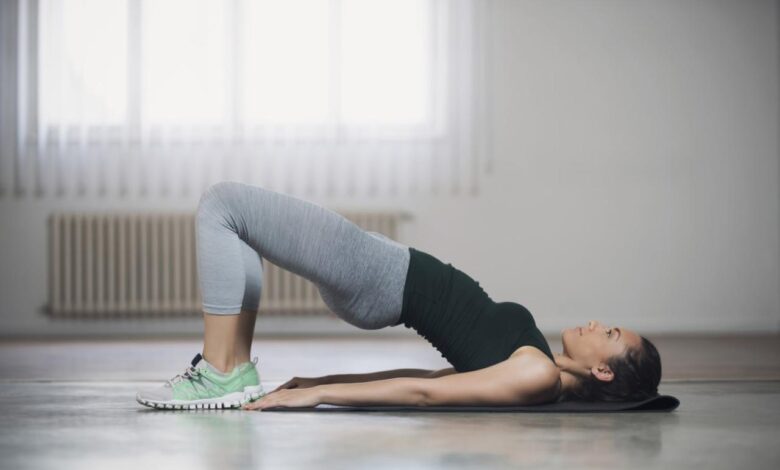
Best Exercises for Strong Glutes and Thighs
Whats the best exercise for great glutes and thighs – What’s the best exercise for great glutes and thighs? It’s a question many of us ask, hoping to achieve that sculpted, toned look we admire. The truth is, there’s no single magic exercise, but a combination of effective movements targeting different muscle groups within the glutes and thighs.
This guide will explore the anatomy of these powerful muscles, dive into a variety of exercises, and provide tips for proper form, progression, and recovery. Let’s get ready to sculpt those glutes and thighs!
From understanding the different muscle groups and their functions to exploring effective exercises, we’ll cover everything you need to know to achieve your desired results. We’ll even delve into nutrition, recovery, and workout routines tailored for different fitness levels. So, whether you’re a beginner or a seasoned gym-goer, this comprehensive guide will equip you with the knowledge and tools to sculpt your glutes and thighs to their full potential.
Understanding Glute and Thigh Anatomy
To effectively target your glutes and thighs with exercise, it’s crucial to understand the intricate anatomy of these muscle groups. This knowledge will enable you to select exercises that specifically engage the desired muscles for optimal results.
Glute Muscles
The gluteal muscles are a powerful group located in the buttocks and play a vital role in hip extension, rotation, and abduction. They contribute significantly to walking, running, jumping, and other dynamic movements.
- Gluteus Maximus:The largest and most superficial gluteal muscle, responsible for hip extension and external rotation. It also plays a role in stabilizing the pelvis and trunk.
- Gluteus Medius:Located beneath the gluteus maximus, it functions primarily in hip abduction and internal rotation. It also helps maintain pelvic stability and balance.
- Gluteus Minimus:The smallest of the three gluteal muscles, it assists in hip abduction and internal rotation. It also contributes to pelvic stability and balance.
Thigh Muscles
The thigh muscles are a complex group that encompasses both the anterior (front) and posterior (back) compartments. These muscles contribute to various movements, including knee extension, flexion, and rotation, as well as hip flexion and extension.
- Quadriceps Femoris:The largest muscle group in the thigh, located on the anterior compartment. It consists of four muscles: rectus femoris, vastus lateralis, vastus medialis, and vastus intermedius. The quadriceps are primarily responsible for knee extension and hip flexion (rectus femoris only).
- Hamstring Muscles:Located on the posterior compartment, the hamstrings consist of three muscles: biceps femoris, semitendinosus, and semimembranosus. They are responsible for knee flexion and hip extension.
- Adductor Muscles:Located on the medial (inner) side of the thigh, the adductor muscles are responsible for hip adduction, or bringing the legs together.
Effective Exercises for Glute and Thigh Development
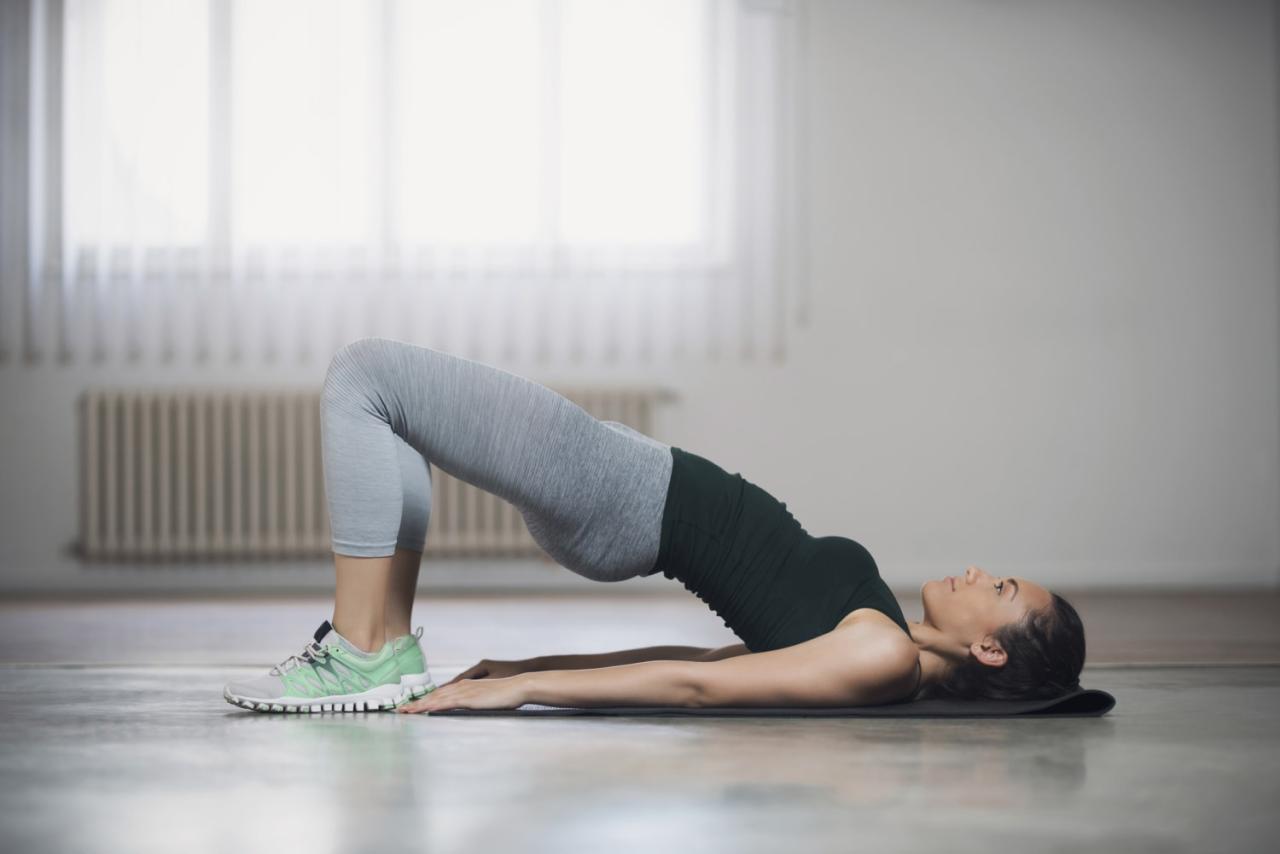
Building strong and sculpted glutes and thighs requires a well-rounded exercise routine that targets all the major muscle groups in these areas. This section will delve into various exercises that effectively target your glutes and thighs, enhancing their size, strength, and definition.
These exercises can be performed at home with minimal equipment or at the gym with specialized equipment.
Effective Exercises for Glute and Thigh Development
A variety of exercises can effectively target the glutes and thighs. These exercises can be categorized based on their target muscles and equipment requirements. The following table Artikels some popular exercises, their target muscles, descriptions, and tips for proper form.
Squats are definitely a go-to for strong glutes and thighs, but let’s be real, sometimes you just crave pizza! If you’re looking for a guilt-free way to satisfy your cravings, check out 11 healthy pizzas under 400 calories.
Then, get back to your squats, lunges, and hip thrusts – those delicious pizzas won’t sculpt your legs on their own!
| Exercise Name | Target Muscles | Description | Tips for Proper Form |
|---|---|---|---|
| Squats | Glutes, Quadriceps, Hamstrings | Stand with feet shoulder-width apart, toes slightly pointed outward. Lower your hips as if sitting in a chair, keeping your back straight and core engaged. Push through your heels to return to the starting position. | Keep your back straight, core engaged, and knees aligned with your toes. Avoid letting your knees go past your toes. |
| Lunges | Glutes, Quadriceps, Hamstrings | Step forward with one leg, bending both knees to 90 degrees. Keep your front knee aligned with your toes and your back knee hovering just above the ground. Push through your front heel to return to the starting position. | Maintain a straight back and core engagement. Ensure your front knee doesn’t go past your toes. |
| Hip Thrusts | Glutes, Hamstrings | Lie on your back with your knees bent and feet flat on the floor. Lift your hips off the ground, squeezing your glutes at the top. Slowly lower your hips back down. | Ensure your shoulders are flat on the ground and your core is engaged. Focus on squeezing your glutes at the top of the movement. |
| Glute Bridges | Glutes, Hamstrings | Lie on your back with your knees bent and feet flat on the floor. Lift your hips off the ground, squeezing your glutes at the top. Slowly lower your hips back down. | Keep your core engaged and your back straight. Focus on squeezing your glutes at the top of the movement. |
| Deadlifts | Glutes, Hamstrings, Back | Stand with your feet hip-width apart, a barbell in front of you. Bend at your hips, keeping your back straight, and grasp the barbell with an overhand grip. Lift the barbell off the ground, keeping your back straight and core engaged. Slowly lower the barbell back down. | Maintain a straight back throughout the movement. Engage your core and keep your back straight. |
| Leg Press | Quadriceps, Glutes, Hamstrings | Sit on the leg press machine with your feet shoulder-width apart on the platform. Push the platform away from you, extending your legs. Slowly return the platform to the starting position. | Keep your back straight and core engaged. Avoid locking your knees at the top of the movement. |
| Hamstring Curls | Hamstrings | Lie face down on the hamstring curl machine, placing your heels on the pad. Curl the pad towards your glutes, contracting your hamstrings. Slowly return the pad to the starting position. | Keep your back straight and core engaged. Focus on contracting your hamstrings throughout the movement. |
Exercise Variations and Progressions: Whats The Best Exercise For Great Glutes And Thighs
To maximize your glute and thigh development, it’s crucial to challenge your muscles with progressive overload. This involves gradually increasing the demands placed on your muscles, forcing them to adapt and grow stronger. This can be achieved through exercise variations, progressions, and equipment modifications.
Exercise Variations for Enhanced Glute and Thigh Activation
Different exercise variations target specific muscle fibers within the glutes and thighs, promoting balanced and well-rounded development. Here are some examples:
- Hip Thrust Variations:The classic hip thrust can be modified to emphasize different areas. For example, performing hip thrusts with a narrower stance targets the glutes more directly, while a wider stance engages the outer thighs more.
- Squat Variations:Squats are a versatile exercise with numerous variations. Goblet squats, for instance, emphasize core stability, while Bulgarian split squats isolate each leg and enhance balance.
- Lunge Variations:Lunges can be modified to target different muscle groups. Walking lunges engage more muscles, while stationary lunges allow for greater control. Adding a twist to lunges, like a forward lunge with a torso rotation, incorporates core engagement.
Exercise Progressions for Gradual Muscle Growth
Progressive overload is achieved through exercise progressions, gradually increasing the difficulty of exercises over time. This can be done by:
- Increasing Weight:Gradually adding weight to your exercises, such as using heavier dumbbells or barbells, increases resistance and challenges your muscles to work harder.
- Increasing Reps:Increasing the number of repetitions per set can also lead to muscle growth.
- Decreasing Rest Time:Reducing the rest time between sets increases the metabolic stress on your muscles, promoting hypertrophy.
- Adding Resistance Bands:Resistance bands can be incorporated into various exercises to increase resistance and challenge your muscles.
Equipment Modifications for Enhanced Glute and Thigh Development
Using different equipment can significantly enhance your glute and thigh workouts.
- Dumbbells:Dumbbells provide a versatile option for various exercises, allowing for adjustable resistance.
- Resistance Bands:Resistance bands provide a constant tension throughout the exercise, increasing muscle activation.
- Barbells:Barbells offer a heavier resistance, allowing for greater muscle growth potential.
- Kettlebells:Kettlebells offer a unique challenge due to their uneven weight distribution, requiring more stabilization and engaging a wider range of muscles.
Importance of Proper Form and Technique
While the exercises we’ve discussed are highly effective for building strong glutes and thighs, it’s crucial to prioritize proper form and technique. This not only maximizes results but also minimizes the risk of injuries.
Understanding the Importance of Proper Form
Maintaining proper form during each exercise ensures that the target muscles are effectively engaged and that the load is distributed correctly. This optimizes muscle activation and prevents undue stress on joints and ligaments.
Potential Risks of Incorrect Form
Incorrect form can lead to several problems, including:
- Reduced muscle activation:If you’re not using the correct form, you may not be engaging the intended muscles effectively, hindering your progress.
- Increased risk of injury:Incorrect form can put excessive stress on joints and ligaments, increasing the risk of sprains, strains, and other injuries.
- Reduced effectiveness:Improper form can limit the range of motion and reduce the effectiveness of the exercise.
How to Avoid Incorrect Form
Here are some tips to help you maintain proper form:
- Start with lighter weights:Begin with weights that allow you to maintain proper form throughout the entire range of motion. As you get stronger, you can gradually increase the weight.
- Focus on quality over quantity:It’s better to perform fewer repetitions with perfect form than to rush through many repetitions with improper technique.
- Engage your core:Keeping your core engaged throughout the exercise helps stabilize your body and prevent strain on your lower back.
- Pay attention to your body:If you feel any pain or discomfort, stop the exercise immediately and adjust your form or reduce the weight.
- Seek professional guidance:If you’re unsure about proper form, consult a certified personal trainer or fitness professional. They can provide personalized guidance and ensure you’re using the correct technique.
Correct Form for Glute and Thigh Exercises
Let’s look at the correct form for some common glute and thigh exercises:
Squats
Stand with your feet shoulder-width apart, toes slightly pointed outward. Lower your hips as if you’re sitting back into a chair, keeping your back straight and core engaged. Push through your heels to return to the starting position.
Important Note:Your knees should not go past your toes during the squat. If they do, you may need to adjust your stance or reduce the weight.
Lunges
Stand with your feet hip-width apart. Take a large step forward with one leg, lowering your hips until your front knee is bent at a 90-degree angle and your back knee is close to the ground. Push through your front heel to return to the starting position.
Repeat on the other side.
Important Note:Your front knee should not go past your toes during the lunge. If it does, you may need to shorten your stride or reduce the weight.
Hip Thrusts
Lie on your back with your feet flat on the floor, knees bent, and hips raised off the floor. Push through your heels to lift your hips higher, squeezing your glutes at the top. Slowly lower your hips back to the starting position.
Important Note:Your back should remain straight throughout the exercise. Avoid arching your back or rounding your shoulders.
Squats, lunges, and hip thrusts are all fantastic exercises for building strong glutes and thighs, but remember, a healthy body starts with a healthy diet. This holiday season, prioritize nutritious meals by following these tips for building a healthier holiday plate – build healthier holiday plate – so you can fuel your workouts and enjoy those holiday treats in moderation.
With a balanced approach to both exercise and nutrition, you’ll be well on your way to achieving your fitness goals.
Glute Bridges
Lie on your back with your knees bent and feet flat on the floor. Lift your hips off the floor, squeezing your glutes at the top. Slowly lower your hips back to the starting position.
Important Note:Keep your core engaged throughout the exercise. Avoid arching your back or rounding your shoulders.
Deadlifts
Stand with your feet hip-width apart, with the barbell in front of you. Bend down and grip the barbell with an overhand grip, slightly wider than shoulder-width. Keeping your back straight and core engaged, lift the barbell off the ground, extending your hips and knees.
Slowly lower the barbell back to the ground.
Important Note:This exercise requires proper technique and can be challenging for beginners. It’s essential to seek professional guidance before attempting deadlifts.
Conclusion
Remember, proper form is paramount for maximizing results and minimizing injury risk. Always prioritize quality over quantity, and don’t hesitate to seek professional guidance if needed. By mastering proper form, you can effectively target your glutes and thighs and achieve your fitness goals safely and efficiently.
Nutrition and Recovery
Fueling your body with the right nutrients is crucial for muscle growth and recovery, just as important as your workout routine. When you exercise, you create microscopic tears in your muscle fibers, and proper nutrition provides the building blocks for repair and growth.
Nutrition for Glute and Thigh Development
A balanced diet plays a key role in supporting glute and thigh development. Your focus should be on consuming adequate amounts of protein, carbohydrates, and healthy fats.
While squats and lunges are staples for strong glutes and thighs, finding time to exercise can be tough, especially when working from home. That’s where a good routine comes in! Check out this great article on 10 ways to stay sane when working from home for some tips on staying motivated and balanced.
Once you’ve got your work-life flow sorted, you can get back to sculpting those glutes and thighs with some killer workouts!
Protein
Protein is essential for muscle repair and growth. Aim for 1.6 to 2.2 grams of protein per kilogram of body weight per day.
- Good sources of protein include lean meats, poultry, fish, eggs, dairy products, beans, lentils, tofu, and quinoa.
Carbohydrates
Carbohydrates provide energy for your workouts and help replenish glycogen stores in your muscles. Choose complex carbohydrates over simple sugars.
- Good sources of complex carbohydrates include whole grains, fruits, vegetables, and legumes.
Healthy Fats
Healthy fats are important for hormone production, cell function, and overall health.
- Good sources of healthy fats include avocados, nuts, seeds, olive oil, and fatty fish.
Rest and Recovery
Adequate rest and recovery time are equally crucial for muscle growth and repair. When you exercise, you create microscopic tears in your muscle fibers. During rest, your body uses the nutrients from your diet to repair these tears and build new muscle tissue.
- Aim for 7-9 hours of sleep per night.
- Take rest days between your workouts to allow your muscles time to recover.
- Listen to your body and take extra rest days when needed.
Training Frequency and Intensity
Determining the right training frequency and intensity for glute and thigh development is crucial for maximizing muscle growth and minimizing the risk of injury. The frequency and intensity of your workouts directly impact the amount of stress placed on your muscles, which in turn dictates their adaptation and growth.
Training Frequency
The optimal training frequency for glute and thigh development is a balance between providing sufficient stimulus for muscle growth and allowing adequate recovery time.
- Training 2-3 times per weekis generally recommended for most individuals, focusing on different muscle groups within each session.
- A split routineallows for adequate recovery between sessions, targeting different muscle groups on different days. For example, you could train your legs and glutes on Monday, upper body on Wednesday, and legs and glutes again on Friday.
- Full-body workouts, performed 2-3 times per week, can also be effective for building glutes and thighs, especially for beginners.
- Listening to your bodyis essential. If you experience excessive soreness or fatigue, consider adjusting your training frequency or intensity.
Intensity and Muscle Growth
Training intensity refers to the amount of effort you exert during your workouts. It’s a key factor in stimulating muscle growth.
“The amount of weight lifted and the number of repetitions performed are crucial for muscle hypertrophy.”
- Progressive overloadis a fundamental principle of muscle growth. This means gradually increasing the weight, repetitions, or sets over time to challenge your muscles and force them to adapt.
- Moderate to high intensityis generally recommended for glute and thigh development. This translates to lifting weights that allow you to perform 6-12 repetitions before reaching muscle fatigue.
- Using a variety of exercise variations, such as squats, lunges, deadlifts, and hip thrusts, helps ensure that you’re targeting all aspects of your glutes and thighs.
Structuring Training Sessions
For optimal results, consider structuring your training sessions to maximize muscle growth and minimize injury risk.
- Warm-up: Start each session with a 5-10 minute warm-up that includes dynamic stretches and light cardio to prepare your muscles for the workout.
- Compound exercises: Focus on compound exercises like squats, lunges, and deadlifts, which work multiple muscle groups simultaneously and promote overall strength and muscle growth.
- Isolation exercises: Incorporate isolation exercises like hip thrusts, glute bridges, and leg extensions to target specific muscle groups.
- Progressive overload: Gradually increase the weight, repetitions, or sets over time to continue challenging your muscles.
- Rest and recovery: Allow 2-3 minutes of rest between sets and ensure adequate sleep and nutrition for optimal recovery.
- Cool-down: End each session with a 5-10 minute cool-down that includes static stretches to improve flexibility and reduce muscle soreness.
Sample Workout Routines
Designing effective workout routines for glutes and thighs requires considering your fitness level and goals. The following are sample routines, one for beginners and one for intermediate/advanced levels, to provide a starting point for your training. Remember to consult with a qualified fitness professional before starting any new workout program.
Beginner Glute and Thigh Workout Routine
This routine is designed for individuals new to strength training or those returning to exercise after a break. It focuses on basic exercises with lighter weights and lower repetitions to build a foundation for more challenging workouts.
- Warm-up: 5 minutes of light cardio, such as jogging in place or jumping jacks, followed by dynamic stretching, like arm circles and leg swings.
- Squats: 3 sets of 10-12 repetitions. Stand with feet shoulder-width apart, toes slightly pointed out. Lower your hips as if sitting in a chair, keeping your back straight and core engaged. Push through your heels to return to standing.
- Lunges: 3 sets of 10-12 repetitions per leg. Step forward with one leg, bending both knees to 90 degrees. Keep your front knee aligned with your toes and your back knee close to the ground. Push off with your front foot to return to standing.
- Glute Bridges: 3 sets of 10-12 repetitions. Lie on your back with knees bent and feet flat on the floor. Lift your hips off the ground, squeezing your glutes at the top. Lower your hips back down slowly.
- Calf Raises: 3 sets of 15-20 repetitions. Stand with feet shoulder-width apart, toes slightly pointed out. Raise up onto your toes, squeezing your calves at the top. Lower back down slowly.
- Cool-down: 5 minutes of static stretching, holding each stretch for 30 seconds.
Intermediate/Advanced Glute and Thigh Workout Routine, Whats the best exercise for great glutes and thighs
This routine is for individuals who have experience with strength training and are looking to build more muscle and strength. It includes more challenging exercises, higher weights, and more repetitions.
- Warm-up: 10 minutes of light cardio, such as jogging or cycling, followed by dynamic stretching, like leg swings and torso twists.
- Barbell Back Squats: 4 sets of 8-12 repetitions. Stand with feet shoulder-width apart, barbell across your upper back. Lower your hips as if sitting in a chair, keeping your back straight and core engaged. Push through your heels to return to standing.
- Bulgarian Split Squats: 3 sets of 10-12 repetitions per leg. Stand with one foot on a bench or platform behind you, the other foot flat on the floor in front. Lower your hips as if sitting in a chair, keeping your front knee aligned with your toes and your back knee close to the ground.
Push off with your front foot to return to standing.
- Hip Thrusts: 4 sets of 10-12 repetitions. Lie on your back with knees bent and feet flat on the floor. Place a barbell across your hips. Lift your hips off the ground, squeezing your glutes at the top.
Lower your hips back down slowly.
- Deadlifts: 3 sets of 5-8 repetitions. Stand with feet shoulder-width apart, barbell in front of you. Bend at the knees and hips, keeping your back straight and core engaged. Grab the barbell with an overhand grip, slightly wider than shoulder-width.
Lift the barbell off the ground, extending your hips and knees. Lower the barbell back to the ground slowly.
- Cool-down: 10 minutes of static stretching, holding each stretch for 30 seconds.
Ending Remarks
Sculpting strong and toned glutes and thighs requires dedication, consistency, and a well-rounded approach. By understanding the anatomy, incorporating effective exercises, and prioritizing proper form, nutrition, and recovery, you can achieve your fitness goals. Remember, progress takes time, so be patient, stay motivated, and enjoy the journey of building a stronger, more sculpted you.

